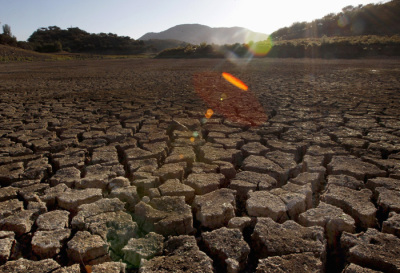Anti-Science Attitude and Media Lies: Your Blinded Climate Friend

Climate change is divisive. While most conservatives tend to be skeptical of the dangers of climate change, most liberals tend to exaggerate them.
Within the scientific community too, a plethora of scientists believe the current change in climate is not unprecedented. Their opinion stands in stark contrast to opinions held by scientists who head the climate policy making bodies at the United Nations.
Friends are no exception. Recently, a friend told me that climate change's impact is very severe in developing agrarian countries like India.
He suggested that everyday observations of drought and inadequate rainfall are so compelling that the dangers of climate change don't have to be validated exclusively by peer-reviewed scientific journals.
But is that so?
I have covered the scientific perspective against exaggerated dangers of climate change in several of my recent articles. Here I would like to bring to light the reality of climate change at grassroot levels, without the aid of peer-reviewed journals.
Last year, farmers from the Indian state of Tamil Nadu held an attention-seeking protest and fast in the country's capital, Delhi.
The farmers, enraged by the drought of 2016 (an El Niño year), protested against the lack of empathy shown by the neighbouring states, which have long refused to share dam water.
Fast forward two years, and the situation is completely different.
The same state that refused to share water with these farmers is now in a situation where it has no option but to release water from its overflowing dams. The monsoon this year has been very healthy, and the dams all along the West coast of India are filling fast, with some already full.
Local farmers here in the traditional agricultural plains of the Kongu region (with a population of nearly 24 million) tell me that they have enough water for the next 5 months. And that timeline is based on just the rainfall received until the week of July 1.
The monsoon season still has 50 days, and the Indian Meteorological Departments has forecasted average summer monsoon season this year. Moreover, the pre-monsoon rains in Southern India provided the much-needed water for regions that generally do not receive rainfall from the monsoons.
Surely, climate alarmists' predictions of drought by are not coming to pass this year. In fact, recent studies indicate that the monsoon rainfall over Indian peninsula has increased since 2002.
While there may be occasional years of extreme droughts driven by El Niño (like the one in 2016), the country is likely to experience average monsoon seasons in the near future.
It is impossible to predict what lies ahead. But there is no evidence of climate change putting the brakes on the Indian agricultural juggernaut.
There have been hundreds of news articles in the Indian media about how climate change has caused unprecedented droughts in the Indian states of Tamil Nadu and Maharashtra.
But the same media are unwilling to acknowledge how the reality of a normal monsoon season invalidates the exaggerated claims of climate change induced droughts.
The same is true in the United States, where the liberal media hijacked the recent hurricanes to promote a false notion that climate change is causing more, and stronger, hurricanes striking the U.S. mainland. In reality, hurricane frequency has fallen compared to previous decades.
The climate alarmists have used anomalies in every natural phenomenon as grounds to promote their claims of exaggerated dangers from exaggerated climate change.
If they don't use caution, your neighbours and colleagues (like my friend), consuming these ideas from mainstream media, will ending up believing climate doomsday is upon us.
It is time to give them a wake-up call. Even if we fail to do so, Nature itself will catch up with them.




























